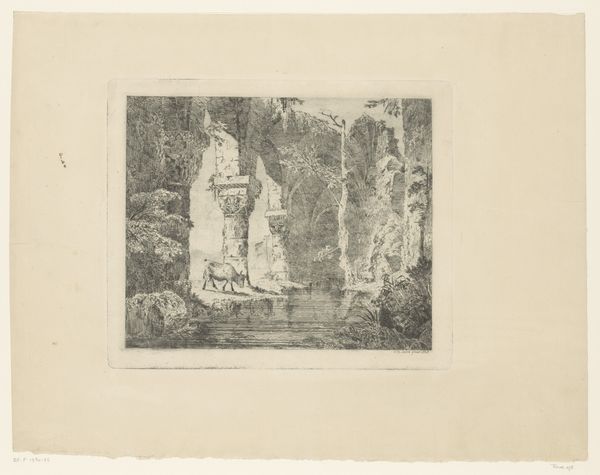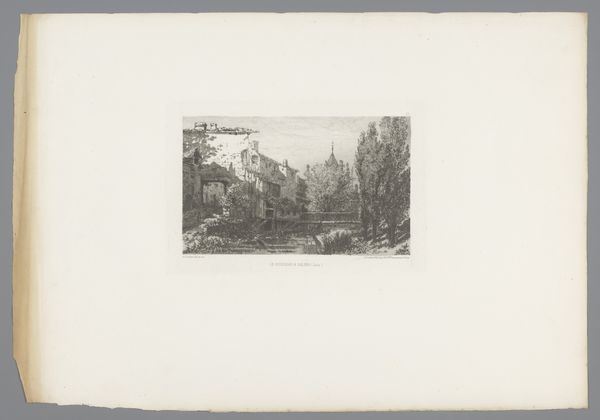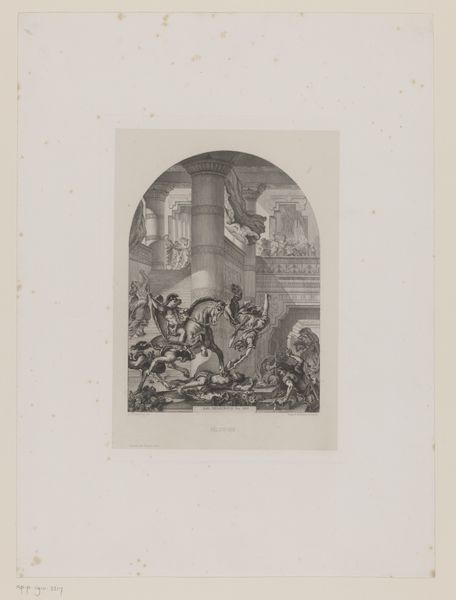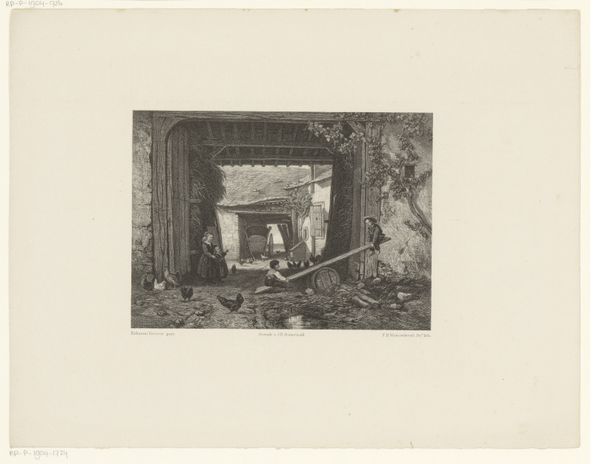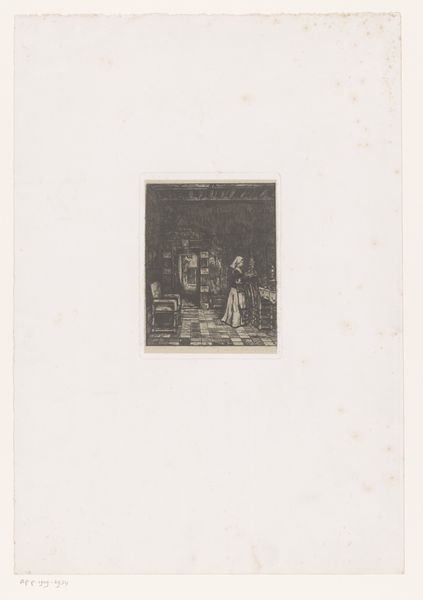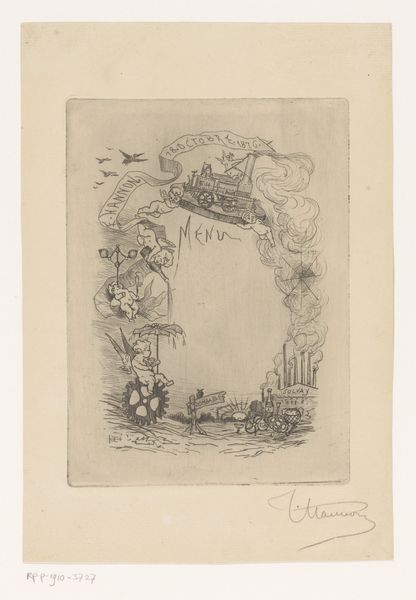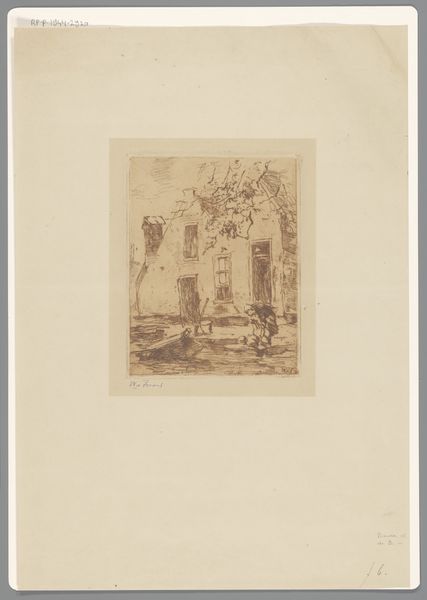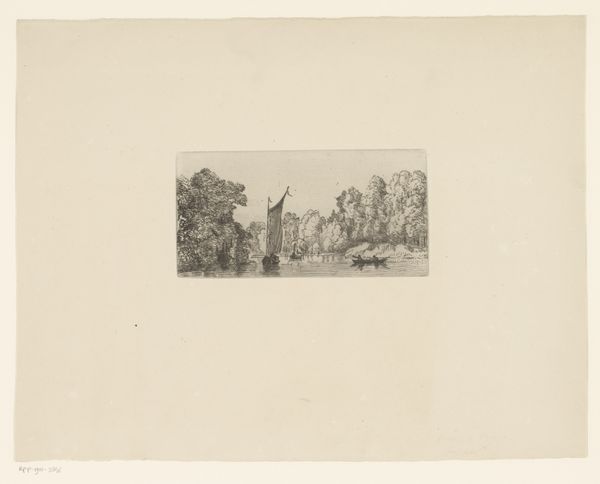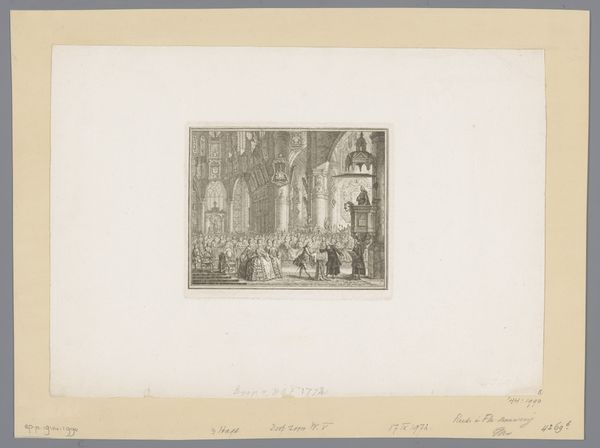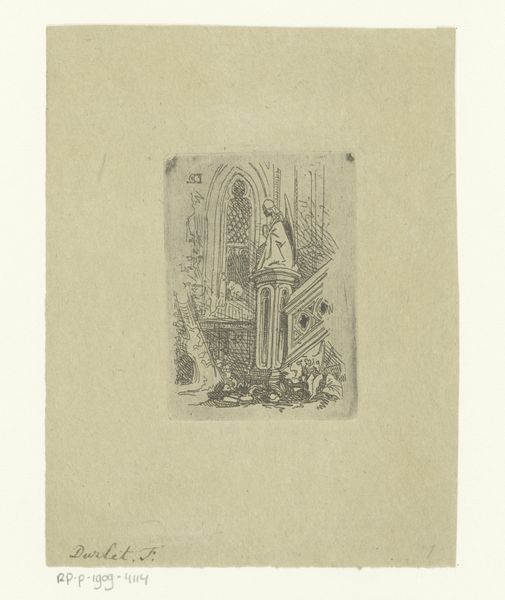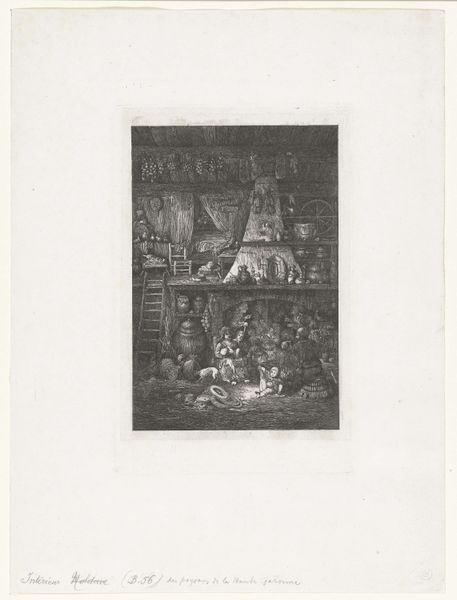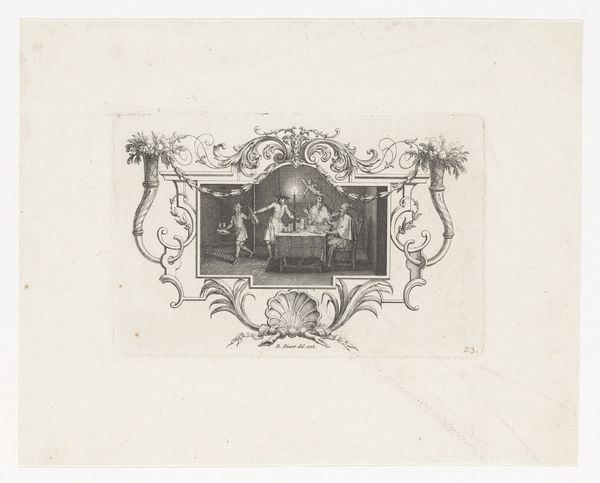
Dimensions: height 238 mm, width 338 mm
Copyright: Rijks Museum: Open Domain
Felix Oudart made this calendar for the year 1880 using etching. At first glance, it might seem like a simple tool for keeping track of dates, but let's delve deeper into its cultural significance. Made in the Netherlands during a time of increasing industrialization, this calendar subtly intertwines the practical and the picturesque. Oudart juxtaposes lists of dates with idyllic scenes of landscapes and leisure, creating a visual tension between the modern need for schedules and a nostalgic yearning for nature. Perhaps this reflects the values of the Dutch middle class. This calendar, therefore, becomes more than just a time-keeping device. It's a window into the social anxieties and aspirations of its time. To fully understand this artwork, a historian might explore Dutch social history of the period, looking at popular imagery, literature, and economic trends. By placing art within its specific context, we can gain a richer understanding of its meaning and relevance.
Comments
No comments
Be the first to comment and join the conversation on the ultimate creative platform.
